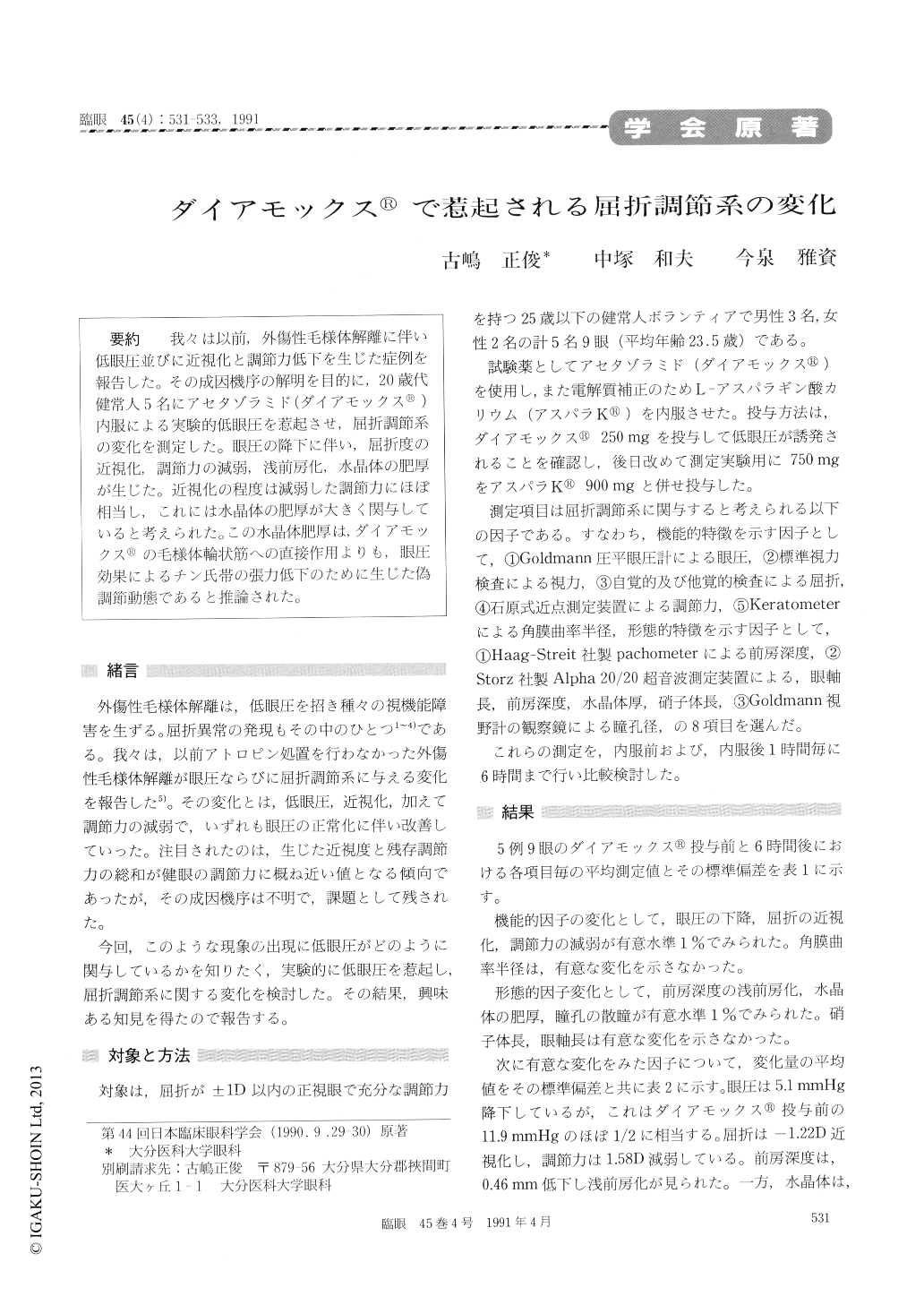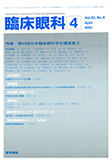Japanese
English
- 有料閲覧
- Abstract 文献概要
- 1ページ目 Look Inside
我々は以前,外傷性毛様体解離に伴い低眼圧並びに近視化と調節力低下を生じた症例を報告した。その成因機序の解明を目的に,20歳代健常人5名にアセタゾラミド(ダイアモックス®)内服による実験的低眼圧を惹起させ,屈折調節系の変化を測定した。眼圧の降下に伴い,屈折度の近視化,調節力の減弱,浅前房化,水晶体の肥厚が生じた。近視化の程度は減弱した調節力にほぼ相当し,これには水晶体の肥厚が大きく関与していると考えられた。この水晶体肥厚は,ダイアモックス®の毛様体輪状筋への直接作用よりも,眼圧効果によるチン氏帯の張力低下のために生じた偽調節動態であると推論された。
We observed earlier two cases of transient myopia and impaired accommodation after traumatic cyclodialysis. To clarify the mechanism of this observation, we evaluated the effects of ocular hypotension after systemic acetazolamide on refraction and accommodation in 5 young volunteers. The induced ocular hypotension induced myopia, impaired accommodation, shallower anterior chamber and thickening of the crystalline lens. The thus induced myopia was of equal magnitude as that of accommodation. The finding seemed to indicate that the changes in refraction and accommodation were related to the thickened lens. Ocular hypotension seemed to be the cause of changes in the lens rather than the direct effect of acetazolamide on the ciliary body.

Copyright © 1991, Igaku-Shoin Ltd. All rights reserved.


